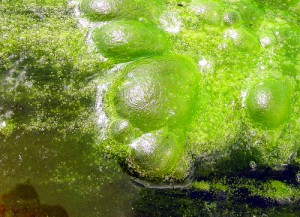Scientists already know that ecologically sustainable fuels can be produced with microbes. The species of blue-green algae that plagues Finland has proven itself a superstar in its ability to produce not just ethanol, but also hydrogen, butanol, isobutanal and potentially biodiesel in a laboratory setting. What still isn’t known is whether this fuel could be produced on an industrial scale. 
Finland’s waterways may someday produce the country’s future fuel supply, as scientists are now discovering the amazing energy-converting powers of cyanobacterium, also known as blue-green algae or sinilevä in Finnish. For years, blue-green algae has only made headlines in Finland as the reason for the ruin of many a summer holiday, as lakes that are infected with the algae are deemed unfit for swimming. Each year more and more lakes are affected.
Researchers now say that annoying little algae may be Finland’s silver bullet for the future. Laboratory tests have shown that ecological fuel can be made from microbes that capture and store energy from photosynthesis. One of the strongest microbial candidates with the power to do this is blue-green algae.
Energy directly from the source
Cyanobacterium is one of the oldest organisms on the planet and its longevity is explained by its ability to convert the sun’s energy into chemical energy. Today’s fossil fuels are based on photosynthesizing plants or biomass that uses microbes as a starter. Complex industrial processes isolate these fuels from the rest of the mass, or they are fed with other microbes.
The main problem with this form of production is that the crops used for fuel these days compete for arable land with food crops. In a search for cleaner, more ecological fuel, researchers at the University of Turku have not set out to find a way to mass produce fuel from cyanobacterium.
Read more: Yle
